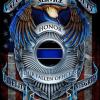Hey, guys!
I'm still researching who I want for my first colony with minimal risk of error and escapees. And there's one thing I keep questioning but find no answers to.
I'm thinking of either getting Pogonomyrmex or Tetramorium spp which seem to be the two best beginner species in my state(Colorado)
At least being sold, for the moment (Not confident enough to go hunt for queens)
And for ant sizes, what's the general consensus of "Small, medium, large"? As I was looking at Tar Heel nests, and they frequently reference this, which makes me believe it's important.
With this also, to search for a suitable nest for my ants, how would I determine the correct tunnel size? Chamber size?(Or if I decide to make my own, but again, I feel more comfortable having it built by a professional) Would this even matter as much as I think it does?
On the guide, here. It says colonies with under 50 workers suffice with 4 chambers. Is this safe to assume to scale accordingly?
100 workers=eight chambers
150-12 chambers?
1000-80?















